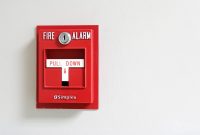If you need home fire insurance, it’s important to shop around and compare different companies. You can save a great deal of money by shopping around for the best rate, and some companies will even offer discounts for safety measures like fire-proofing. In this article, we’ll discuss the different types of coverage, how much coverage you need, and which discounts are available.
Cost of coverage
Home fire insurance is a critical element of protecting your home and valuable possessions in case of a fire. In the United States, there are different types of policies to meet different needs and budgets. Some policies only cover certain types of damage, while others cover all types of damages. In general, there are two types of coverage: replacement cost and cash value. While the former type of coverage pays for items’ current value, the latter covers the cost of replacement of the items with new ones of similar quality. The latter type of policy costs more than the former, but it provides a higher level of protection.
Fire-related claims represent the single most expensive type of homeowner’s insurance claim, according to the Insurance Information Institute. In recent years, wildfires have become a major threat, resulting in an increase in home insurance prices. As a result, insurance companies have included wind damage and wildfire damage exclusions in many policies. This is because of the high risk of wildfires, especially in areas of coastal areas.
Discounts available
Home fire insurance discounts are available for a variety of reasons. For example, if you recently moved in to a new home, you may qualify for a new customer discount. Some insurance companies also offer discounts for nonsmokers. Nonsmokers are less likely to smoke, so they are less likely to catch fire. Bundling different insurance policies will also get you a discount.
In addition to the above discounts, you may also qualify for discounts specific to your policy or your home. Some of these are based on age and location, while others are based on certain factors like proximity to a fire station or hydrant. To reduce your premium, contact your insurance agent and provide any documentation that shows that you have made changes to your home.
Location of your home
The location of your home is one of the most important factors to consider for finding cheaper home fire insurance rates. Insurance companies look at the features of the neighborhood around your home and the location’s proximity to fire hydrants and fire protection facilities. Generally, houses within five miles of a fire station will receive cheaper rates.
Other factors to consider when looking for cheaper home fire insurance rates include the age and value of your house. While newer homes are generally cheaper to insure, older and larger houses tend to cost more. However, you can sometimes qualify for discounts when purchasing a new house.
Condition of your home
The state of your home is an important factor to consider when buying home fire insurance. Many insurers send out inspectors to assess your home and determine potential risks. If your home is in bad condition, the insurer may decline your policy or increase your premium. You should take care to fix any maintenance problems before the inspector visits. If you don’t, your insurance company may not rebuild the damaged home or protect you in case of an accident.
ISO fire score
When buying home fire insurance, check your community’s ISO fire score. This is a risk assessment based on factors such as fire protection services, fire department size, and emergency communications. It helps you determine the risk of fire in your area and, therefore, how much you will pay for your premium. If your community has a high ISO fire score, you will likely pay less for your home insurance policy.
There are ways to improve your ISO score, and many insurance companies use this information in their calculations. You can also engage your neighborhood or homeowners association to help improve your ISO score. These groups are generally very supportive of a higher ISO fire score, and they can also help you find a better rate.
ALE coverage
If you are in the process of purchasing a new house, it may be a good idea to look into ALE coverage. This type of home insurance can reimburse you for items up to a certain amount. The policy will cover the cost of the items, minus your usual expenses. ALE coverage can help you get back on your feet financially after a disaster.
Typically, an ALE payout of between 10% and 20% of the value of your home is included in your homeowners insurance. However, you can increase this coverage to 100% or more, depending on the amount of your actual loss sustained. The goal is to get enough ALE reimbursement for a household to live comfortably.



